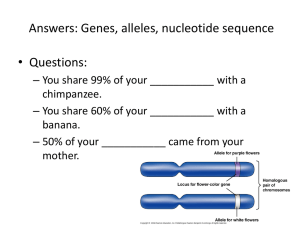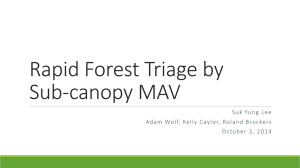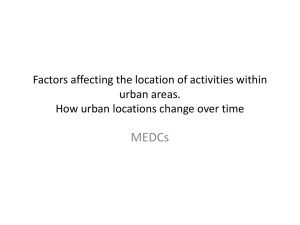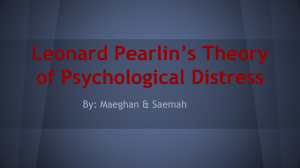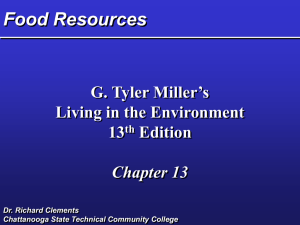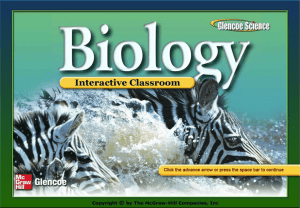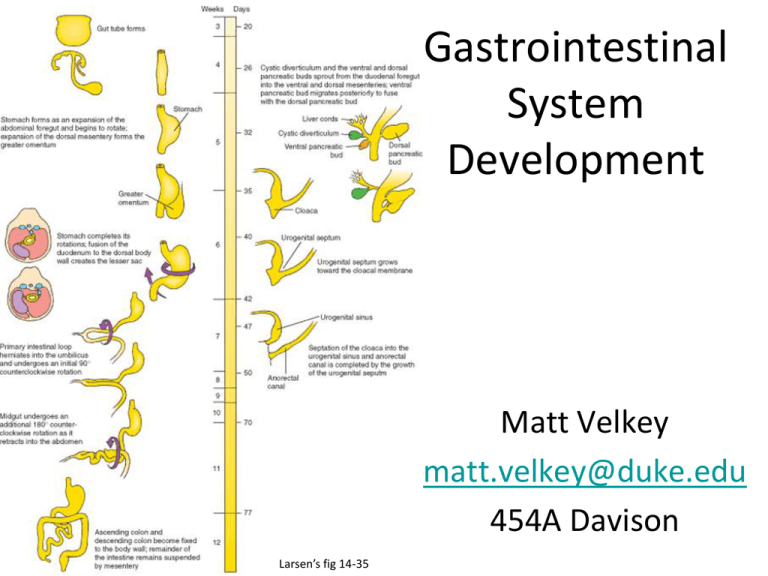
Gastrointestinal
System
Development
Matt Velkey
matt.velkey@duke.edu
454A Davison
Larsen’s fig 14-35
Gastrulation:
Epiblast cells
migrate through the
primitive streak.
Definitive (embryonic)
endoderm cells displace
the hypoblast.
Mesoderm spreads
between endoderm
and ectoderm.
Langman’s fig 5.3
Early mesodermal patterning:
(buccopharyngeal membrane)
Specific regions of the epiblast migrate
through the streak at different levels
and assume different positions within
the embryo:
Cranial to caudal:
Notochord (n)
Paraxial mesoderm (pm)
Intermediate mesoderm (im)
*Lateral plate mesoderm (lpm)
Extraembryonic mesoderm (eem)
Langman’s fig 5-07
Endoderm
Carlson fig 6-20
The developing endoderm (yellow) is initially open to the
yolk sac (the cardiac region is initially most anterior)…
Cranio-caudal folding at both ends of the embryo and
lateral folding at the sides of the embryo
bring the endoderm inside and form the gut tube.
cloacal membrane
Carlson fig 6-20
Folding creates the anterior and posterior intestinal portals
(foregut and hindgut, respectively)
The cardiac region is brought to the ventral side of the
developing gut tube.
Juxtaposition of ectoderm and endoderm at:
Oropharyngeal (buccopharyngeal) membrane - future mouth
Cloacal membrane - future anus
Note: there actually isn’t much mesoderm in these membranes, which is important for
their breakdown later in development to form the oral and anal orifices.
Carlson fig 6-20
Gut-associated organs begin to form as buds from the
endoderm: (e.g., thyroid, lung, liver, pancreas)
Midgut opening to the yolk sac progressively narrows
Carlson fig 6-20
By the end of the first month:
The stomach bulge is visible,
Dorsal pancreas has begun to bud
Connection of the midgut to the yolk sac is reduced to
a yolk stalk and then a very thin vitelline duct
With lateral folding,
mesoderm is recruited
to gut wall
Carlson fig 6-20
Langman’s fig 6-18
• Lateral folding of the embryo completes the gut tube
• Mesodermal layer of the gut tube is called splanchnic (visceral)
mesoderm - derived from lateral plate mesoderm
• Somatic mesoderm lines body cavity
Gut tube proper
Foregut:
pharynx
esophagus
stomach
proximal duodenum
Midgut:
proximal duodenum to
right half of
transverse
colon
Hindgut:
left half of
transverse
colon to anus
Derivatives of gut tube
thyroid
parathyroid glands
tympanic cavity
trachea, bronchi, lungs
liver, gallbladder
pancreas
urinary bladder
(These three regions are defined by their blood supply)
4th week
5th week
Langman’s fig 14-14
Langman’s fig 14-4
Celiac artery supplies the foregut
Superior mesenteric artery supplies the midgut
Inferior mesenteric artery supplies the hindgut
The figure on the right also shows the mesenteries; note that the liver and stomach have
dorsal and ventral mesenteries whereas the rest of the gut has only a dorsal mesentery.
Regional patterning of the gut tube
Gut = bilayered tube (endoderm surrounded by mesoderm)
Regional gut tube patterning and organogenesis require
bi-directional endoderm-mesoderm cross-talk
and inductive signals from other nearby structures
Cranial-caudal pattern of the gut tube is played out
as regional organ differentiation.
Distinct borders form.
Esophageal/Gastric border
Esophagus
Stomach
Pyloric border (gastric/duodenal)
Stomach
Duodenum
Stomach
Duod.
Regional patterning of the gut tube - the Hox code
Hox genes are evolutionarily
conserved transcription
factors that are used in
regional patterning (flies to
mammals).
The gut has an cranial-caudal
Hox gene expression pattern
(code) similar to that seen in
neural tissue.
Some Hox genes are
expressed in mesoderm, in
overlapping patterns; some
are expressed in endoderm.
Hox gene expression
boundaries correspond to
morphologically recognizable
elements in the GI tract.
Hox gene expression is
important for formation of
major sphincters (red circles)
Carlson fig 15-01
Hedgehog signaling is important for RADIAL
(concentric) patterning of the entire gut tube
Adult Esophagus
Fetus
Larsen’s fig 14-27
Wheater’s fig 14-5
• High hedgehog concentration directly inhibits smooth muscle differentiation (via repression of
Smooth Muscle Activating Protein, or Smap)
• Low Hedgehog concentration is permissive of muscle differentiation in the outer wall of the gut
• High Hedgehog concentration also induces high BMP which inhibits neuron formation, thus limiting
neurogenesis initially to the outer muscular wall of the gut (later in development, SHH goes away
allowing development of the smooth muscle of the musularis mucosae and neurons of the
submucosal plexus)
Morphogen: induces different cell fates at different concentrations of signal
Regional Organogenesis: Esophagus
• Region of foregut just caudal to lung
bud develops into esophagus –errors
in forming the esophagotracheal septa
and/or re-canalization lead to
tracheoesophageal fistulas and/or
esophageal atresia, respectively.
• Endodermal lining is stratified
columnar and proliferates such that
the lumen is obliterated; patency of
the lumen established by recanalization –errors in this process lead
to esophageal stenosis
Langman’s fig 14-06
– NOTE: this process of recanalization occurs
throughout the gut tube, so occlusion can
occur anywhere along the GI tract (e.g.
duodenal stenosis)
Larsen’s fig 14-22
5th week
7th week
9th week
• Tube initially short and must grow in
length to “keep up” with descent of
heart and lungs –failure of growth in
length leads to congenital hiatal hernia
in which the cranial portion of the
stomach is pulled into the hiatus.
Regional Organogenesis: Stomach
5th week
4th week
6th week
Greater omentum
3rd
Langman’s figs 14-08, 11, 12
month
3rd month
3rd month
• Stomach appears first as a fusiform dilation of the foregut endoderm which undergoes a 90° rotation such that the left
side moves ventrally and the right side moves dorsally (the vagus nerves follow this rotation which is how the left vagus
becomes anterior and the right vagus becomes posterior).
• Differential growth establishes the greater and lesser curvatures; cranio-caudal rotation tips the pylorus superiorly
• Dorsal AND ventral mesenteries of the stomach are retained to become the greater and lesser omenta, respectively
• Caudal end of the stomach separated from the duodenum by formation of the pyloric sphincter (dependent on factors
such as SOX-9, NKX-2.5, and BMP-4 signaling) –errors in this process lead to pyloric stenosis.
Pyloric Stenosis
• Rather common malformation:
present in 0.5% - 0.1% of infants
• Characterized by very forceful (aka
“projectile”), non-bilious vomiting
~1hr. after feeding (when pyloric
emptying would occur).
NOTE: the presence of bile would indicate
POST-duodenal blockage of some sort.
• Hypertrophied sphincter can often be
palpated as a spherical nodule;
peristalsis of the sphincter seen/felt
under the skin.
• Stenosis is due to overproliferation /
hypertrophy of pyloric sphincter…
NOT an error in re-canalization.
• More common in males than females,
so most likely has a genetic basis
which is as yet undetermined.
A closer look at the mesenteries
5 weeks
Langman’s fig 14-26
•
Last trimester
Langman’s fig 14-30
The stomach and liver are suspended in a mesentery that is attached to the dorsal
AND ventral body walls
– Dorsal mesentery of stomach becomes the greater omentum
– Ventral mesentery of stomach/dorsal mesentery of the liver becomes the lesser omentum
– Ventral mesentery of the liver becomes the falciform ligament
•
The rest of the GI tract is suspended in a dorsal mesentery (mesodoudenum,
mesocolon, etc.)
Regional Organogenesis: Liver & Pancreas
Langman’s fig 14-19
• Liver and pancreas arise in the 4th week from foregut
endoderm in response to signals from nearby mesoderm
• Pancreas actually has ventral and dorsal components,
each specified in a different manner
Cardiac mesoderm and septum transversum
specifies liver and ventral pancreas (sort of…)
ventral pancreas
Langman’s fig 14-22
• ALL foregut endoderm has the potential to develop into either liver or pancreas but local signals
repress these fates (mesodermal Wnts ↓ Liver; mesodermal Wnts + endodermal Shh ↓ Pancreas)
• FGFs and BMPs from cardiac mesoderm and septum transversum inhibit Wnt signaling, but the
endoderm still expresses Shh and thus develops into liver.
• Meanwhile, endoderm just caudal to liver bud is out of reach from the FGFs and BMPs but still sees
Wnts, so the tissue does NOT become liver. Unlike the rest of the endoderm, it does NOT express
Shh and so develops into pancreas.
The dorsal pancreas is specified by
signaling from the notochord
Larsen’s fig 14-05
Signaling from the notochord represses Shh in caudal foregut
endoderm, which permits dorsal pancreatic differentiation.
Rotation of the
duodenum brings
the ventral and
dorsal pancreas
together
Larsen’s fig 14-09
Aberrations in this process may
result in an annular pancreas,
which can constrict the duodenum.
Also, since the dorsal and ventral
pancreas arise by different
mechanisms, it’s possible that one
or the other may be absent in the
adult.
Larsen’s fig 14-10
Rotation of the duodenum also causes it and the
pancreas to become SECONDARILY retroperitoneal
5th week
3rd month
Langman’s fig 14-11
Secondarily retroperitoneal = a structure that was originally in the body coelom but
then got pushed into the body wall during development
Intraperitoneal vs. retroperitoneal vs.
secondarily retroperitoneal
Larsen’s fig 14-16
Development of the midgut and colon
Herniation and rotation:
– Growth of the GI tract exceeds volume of abdominal
cavity so the tube herniates through umbilicus
– While herniated, gut undergoes a primary rotation
(fig B) of 90° “counterclockwise” (when looking at
the embryo); this corresponds with the rotation of
the stomach, and positions the appendix on the left.
The primary rotation also brings the right vagus n. to
the FRONT (hence the change in its name to
ANTERIOR vagus n.
– With the growth of the embryo, the abdominal
cavity expands thus drawing the gut tube back
within the abdominal cavity and causing an
additional, secondary rotation (fig C) of 180° CCW
(positioning the appendix on the RIGHT)
– Once in the abdominal cavity, the colon continues to
grow in length, pushing the appendix to its final
position in the lower right quadrant.
– Note the attachment of the vitelline duct to the gut
at the region of the ileum. The duct normally
regresses during development, but not always….
Defects associated with gut herniation and
rotation: vitelline duct abnormalities
Langman’s fig 14-32
Vitelline duct abnormalities of some sort occur in ~2% of all live
births. Note that these aberrant structures are almost always
found along the ileal portion of the GI tract.
Defects associated with gut herniation
and rotation: oomphalocoele
Langman’s fig 14-31
Defects associated with gut herniation and
rotation: abnormal rotation
Langman’s fig 14-33
Absent or incomplete
secondary rotation
Reversed secondary rotation
(90 CCW primary rotation occurs as usual
but followed by abnormal 180 CW rotation.
Net rotation is 90° CW; viscera are in their
normal location, but note that the duodenum
is anterior to the transverse colon)
Defects associated with gut herniation and
rotation: volvulus
Carlson fig 15-13
Fixation of a portion of the gut tube to the body wall;
subsequent rotation causes twisting of the tube, possibly
resulting in stenosis and/or ischemia.
Development of the hindgut
Langman’s fig 14-36
imperforate anus
•
Derivatives of the hindgut include everything caudal
to the distal 1/3 of the transverse colon.
•
Distalmost portion (sigmoid colon and rectum)
divides cloaca into the anorectal canal and
urogenitial canals –errors in this process can lead to
imperforate anus (“A” on right), atresia (B), and/or
fistulas (C – F)
•
As with the rest of the GI tract, enteric neurons in
the hindgut arise from vagal neural crest (plus some
sacral crest). Distalmost portions of the hindgut are
farthest away and therefore more sensitive to
perturbations in migration (e.g. mutations in RET),
resulting in congenital megacolon (Hirschspring’s
Disease).
anal atresia
anoperineal fistula
rectovaginal fistula
rectourethral fistula
rectovesical fistula
Carlson fig 15-18
Neural crest cells from vagal and sacral regions colonize the gut and give
rise to the enteric neurons of the myenteric and submucosal plexes:
Hirschsprung’s Disease: failure of vagal neural crest migration
and/or survival, usually affecting distal hindgut (there are some sacral
crest-derived cells there, but they cannot make up for loss of vagal crest-derived cells)
Hirschprung Disease
(congenital megacolon)
•
•
•
•
•
Occurs in ~1:5000 births
Caused by failure of vagal neural
crest cells to migrate into a
portion of the colon
Denervated region tonically
constricted (role of myenteric
plexus is largely INHIBITORY)
Upstream regions become
distended (hence “megacolon”)
Surgically repaired by removing
affected region




